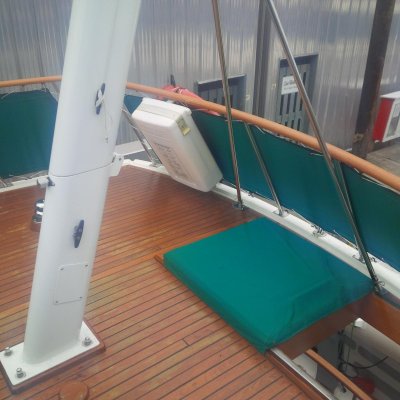Echoing Delfin’s post.
The only time I actually employed a Lifesling was close to 30 years ago. I was on a 43’ ketch tranisiting Mississippi Sound in the winter with my two sons. I was in shape enough to keep up with Navy SpecWar (not a SEAL) physical qualifications, 17-year-old son was a state champ swimmer, 14 year old played HS football and track.
We responded to a Coast Guard alert for a fishing boat taking on water. It was blowing and cold (for here, probably low 40s). Plenty of 3-4’ waves with typical short periods. No idea of water temp, although that time of year sea temps tend to be mid to low 50s.
On arrival to the reported area, we luckily and fairly quickly spotted 2 people in the water, with lifejackets, and no boat to be seen. I don’t recall how long they’d been in the water.
We had drilled (my sons and I sailed together quite a bit) on MOB with the LS. In the sunshine, with good weather, and healthy “subjects”. Rigged the block and tackle off the main boom. The boat had about 4’ of freeboard, with the main boom about 9-10’ above water. I think this was a pretty ideal setup in Lifesling terms.
We used the LS. Put our MOB plan to work. Both were conscious but unable to render any meaningful self-assistance – pretty cold. Had issues with one person sliding out of the LS as Delfin described. Took a couple of tries. One was a big boy, probably 2-250. The other pretty average. I will simply say that between me and two strapping teenager boys, recovering those folks was a real chore.
I compare that with my current boat (no boom, high freeboard), current crew (old guy and a 115# wife), and conclude the best I’m probably going to do is get the victim at/on the swim platform and/or drop the inflatable on its Weaver clips as a recovery platform and do what I can until further assistance arrives.
To be clear, all things considered, I think the LS concept is pretty good – it just doesn’t fit my current boat. I have two rings and throw lines, one set on the FB and one on the aft rail.


